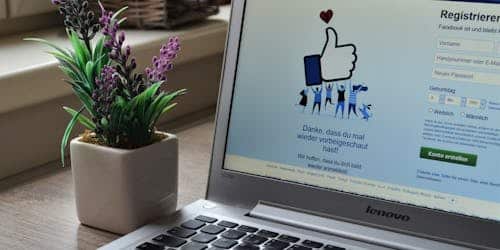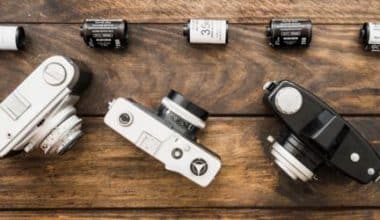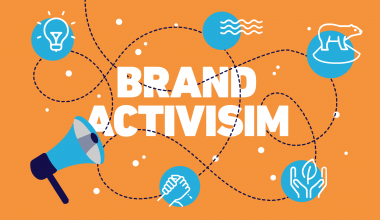When it comes to making a powerful impact in the Nigerian market, using brand archetype examples can be a game-changer. A brand archetype doesn’t just give your business a face; it breathes life into it, building a character that customers can connect with on a human level. Imagine your brand as a trusted friend, a bold leader, or a wise guide—these archetypes turn simple businesses into unforgettable experiences, standing out in crowded markets and creating lasting impressions. By choosing the right archetype, your brand becomes more than just a name; it transforms into a personality that resonates emotionally with your audience, leading to loyalty and trust that can grow over time.
In this article, I’m going to explain what brand archetype means, types of archetypes, benefits of brand archetypes, and how to choose the right brand archetypes.
Key Points
- A brand archetype establishes a unique identity that customers can easily recognize and relate to, making the brand memorable and impactful.
- By embodying familiar human traits, a brand archetype forges a deep, emotional bond with consumers, fostering loyalty and trust.
- Archetypes help brands stand out in competitive markets, giving them a distinct personality that separates them from the crowd.
- An archetype guides consistent communication, ensuring that the brand’s tone and message remain unified across all platforms, strengthening consumer trust.
What is a Brand Archetype?
A brand archetype is a symbolic framework that captures your brand’s personality through familiar human characteristics, creating a deeper, more relatable connection with your audience. This recognizable representation embodies core human traits, enabling your brand to express a distinct identity—whether it’s playful like the Jester, authoritative like the Ruler, or nurturing like the Caregiver.
Marketing teams utilize these brand archetype examples to establish a cohesive brand identity that not only stands out but also resonates emotionally with consumers, turning brand interactions into memorable experiences. By aligning your brand with an archetype, you can cultivate a consistent voice and narrative that speaks to the emotions, aspirations, and values of your audience. A well-chosen brand archetype transforms your brand from just a name or product into a trusted, relatable presence, fostering deep loyalty and engagement.
What Are the 12 Brand Archetypes?
Each archetype represents a unique approach to storytelling and marketing, offering businesses a roadmap to articulate their identity. Here’s an overview of each of the 12 brand archetypes:
#1. Creator
The Creator archetype is all about vision, creativity, and originality. These brands are dedicated to making products that inspire and empower others to express themselves. They thrive on innovation and are often the first to challenge the norm, leading the charge in new ideas and designs. Brands like Apple, Lego, and Adobe embody this archetype, with a message centered around thinking differently and creating products that stand out.
#2. Sage
The Sage archetype, often depicted as the wise mentor, is driven by the pursuit of knowledge. These brands value learning, expertise, and sharing insights with the world. They aim to empower others through information, encouraging exploration and intellectual growth. Google, TED, and Discovery Channel are perfect brand archetype examples of the Sage, consistently delivering wisdom and encouraging audiences to seek the truth.
#3. Caregiver
Compassionate and nurturing, the Caregiver brand archetype seeks to make the world a safer and kinder place. These brands prioritize support, trust, and selflessness, aiming to protect and serve their communities. Unicef, Johnson & Johnson, and Pampers represent the Caregiver, with brand messages focused on caring for others and fostering a sense of security and reassurance.
#4. Innocent
With a focus on positivity, honesty, and simplicity, innocent brands are optimistic and wholesome. These brands bring joy to their audiences, emphasizing happiness, peace, and integrity. Dove, Coca-Cola, and Volkswagen are examples of brand archetypes that reflect innocence, promoting a vision of purity and a “glass half-full” approach to life.
#5. Jester
The Jester is all about fun, humor, and bringing lightheartedness to everyday life. These brands thrive on creating positive experiences that entertain and engage, often with a playful edge. Skittles, M&Ms, and Budweiser capture the spirit of the Jester by celebrating enjoyment, laughter, and shared moments.
#6. Magician
The Magician archetype is known for transforming ideas into reality and creating unforgettable experiences. These brands aim to deliver magical moments that inspire wonder and curiosity, making the impossible seem achievable. Disney, Polaroid, and Dyson exemplify this archetype by transporting audiences to worlds filled with magic, innovation, and boundless creativity.
#7. Ruler
The Ruler archetype embodies power, control, and leadership. These brands are authoritative, setting standards, and often seen as aspirational and reliable. They value tradition and stability while maintaining a strong sense of purpose and confidence. Rolex, Rolls Royce, and Hugo Boss are brand archetype examples of the Ruler, representing luxury, exclusivity, and timeless prestige.
#8. Hero
It is known for courage, resilience, and determination. The Hero archetype is driven to overcome obstacles and make a difference. Hero brands are inspirational and encourage their audiences to achieve their full potential. Nike, Adidas, and BMW represent this archetype, delivering messages of empowerment and ambition that resonate with those who strive for greatness.
#9. Everyman
The Everyman, or Regular Guy, is relatable, genuine, and down-to-earth. Brands with this archetype aim to connect with people on a personal level, fostering a sense of community and inclusivity. These brands emphasize authenticity and are often modest, approachable, and unpretentious. Ford, Ikea, and Levi’s embody the Everyman archetype, reaching audiences who value simplicity, reliability, and an honest connection.
#10. Rebel
The Rebel, also known as the Outlaw, thrives on breaking conventions and challenging the status quo. These brands attract people who value freedom and boldness, offering an alternative to mainstream choices. The Rebel archetype embraces risk-taking, unconventional ideas, and liberation from traditional boundaries. Harley-Davidson, Diesel, and Red Bull are examples of brand archetypes that embrace the Rebel spirit, appealing to those who seek individuality and aren’t afraid to stand out.
#11. Explorer
The Explorer archetype represents a quest for discovery, freedom, and adventure. Brands with this archetype encourage their audiences to push boundaries, explore the unknown, and embrace new experiences. Explorers are often independent, curious, and motivated by self-discovery. Jeep, The North Face, and National Geographic exemplify this archetype, inspiring those who crave freedom and a path of self-exploration.
#12. Lover
The lover archetype is driven by intimacy, passion, and connection. Brands with this personality appeal to emotions, creating a sense of exclusivity and desire. They focus on aesthetics, pleasure, and the pursuit of deep, meaningful relationships. Victoria’s Secret, Chanel, and Godiva embody the Lover archetype, captivating audiences with their allure and emphasis on personal, often luxurious, experiences.
How to Choose the Right Brand Archetype
Choosing the right brand archetype is one of the most impactful steps in shaping your brand’s identity and creating a strong connection with your audience. Here is how you can choose an archetype that genuinely represents your brand and resonates with your customers:
#1. Revisit Your Mission
Begin by reconnecting with your brand’s mission and core values. Your mission isn’t just about what you offer; it’s about the bigger purpose driving your business. Reflect on the goals you’ve set and the impact you want to make in your industry.
When you examine your existing communications, you might notice a certain archetype already shining through—perhaps it’s a creator’s innovation or a Caregiver’s compassion. Look at how your product or service influences your customers’ lives, and let that guide you in identifying the brand archetype that naturally aligns with your vision.
#2. Consider Your Customer
The next step is to think about who you’re serving. Your customers are central to your brand story, so take the time to create a clear profile of your target audience. Imagine the lives and values of the people who trust your brand: Are they looking for a source of inspiration, like a Hero, or do they want a trusted, down-to-earth companion, like the Everyman?
Getting into your customer’s mindset helps you see how they perceive you, allowing you to pick a brand archetype that reflects the emotional connection you aim to create.
#3. Assess Your Competitors
Knowing how your brand fits into the larger landscape is crucial. Conduct research to understand the brand archetypes of competitors and the identity they project to customers. If many in your field are aligned with a Ruler or Sage archetype, consider embracing something unique like the Jester or the Explorer to stand out.
This differentiation can be a game-changer, setting you apart in a crowded market and attracting customers who are drawn to your distinctive voice.
#4. Choose an Archetype
After examining your mission, customer perspective, and competitive landscape, you’re ready to choose an archetype that aligns with your values and aspirations. This archetype will now serve as your compass, guiding everything from marketing to customer interactions.
Establish clear guidelines so your entire team can create messaging that consistently reflects this identity. The right brand archetype ensures that your brand’s voice and actions are unified, appealing to your audience on a deeply emotional level.
Benefits of Brand Archetypes
The benefits of brand archetypes include:
#1. Strengthens Brand Identity
Using a brand archetype helps solidify your brand’s identity, giving it a personality that feels real and relatable. When customers see familiar human traits in your brand, it creates a stronger sense of who you are and what you stand for, making it easier for them to remember and connect with your brand.
#2. Builds Emotional Connections
A carefully chosen brand archetype enables your brand to resonate on a deeper, emotional level with your audience. Whether your brand embodies the adventurous spirit of the Explorer or the wisdom of the Sage, these archetypal qualities make customers feel understood and valued, fostering lasting loyalty and trust.
#3. Enhances Differentiation
In a crowded market, brand archetype examples offer a way to set your brand apart. By adopting an archetype that aligns with your values but differs from competitors, you carve out a unique space in the minds of consumers, making your brand both distinct and memorable.
#4. Provides Consistent Messaging
With a brand archetype guiding your communication strategy, you maintain a consistent voice and message across all touchpoints. This ensures that no matter how or where customers interact with your brand, they experience the same personality and tone, reinforcing trust and recognition.
#5. Improves Targeted Marketing
Selecting a brand archetype can also refine your understanding of your target audience, helping you speak directly to their desires and motivations.
For instance, if your audience seeks inspiration, embodying the Hero archetype can capture their attention and loyalty more effectively than a generic approach.
What Is Nike’s Brand Archetype?
Nike embodies the hero archetype by crafting narratives that showcase individuals overcoming obstacles through hard work and determination.
The brand features real athletes who share their personal journeys of struggle and success, emphasizing resilience.
What Brand Archetype Is Coca-Cola?
the innocent archetype. Coca-Cola is often used as an example of using the Innocent archetype in branding
Can a Brand Have Two Archetypes?
Multiple archetypes are used to drive brand stories, create tension, develop intrigue, and allow consumers to build their own unique and intimate relationship
Conclusion
In conclusion, these brand archetype examples illustrate how each of the 12 archetypes resonates with distinct audience desires and aspirations. By aligning a brand with an archetype, companies can connect more authentically with consumers, build loyalty, and convey their values more effectively.
Whether it’s the innovation of the Creator or the adventure of the Explorer, brand archetypes offer a powerful framework for shaping brand identity.
Related Articles
- Brand Book: 7 Best Brand Book Examples for Your Inspiration + How to Create One
- A Detailed Guide to Brand Development: 5 Strategies You Need to Know
- Small Business Branding Ideas: 15 Creative Ideas for 2024
- Iconic Brand Characters and Their Impact on Consumer Loyalty






